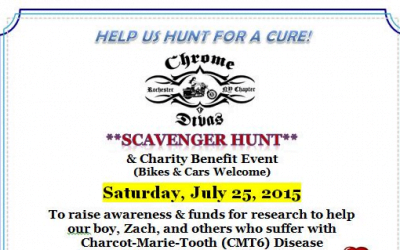 CMT1A is the most common type of CMT, affecting approximately 2.8 million people across the globe. For those diagnosed with CMT1A, managing their disease is limited to orthotics, leg braces, physical, and occupational therapy or surgery because currently there is no cure or drugs approved for use.
CMT1A is the most common type of CMT, affecting approximately 2.8 million people across the globe. For those diagnosed with CMT1A, managing their disease is limited to orthotics, leg braces, physical, and occupational therapy or surgery because currently there is no cure or drugs approved for use.
The good news for our community is that, for the first time, a drug candidate has reached Phase 3 clinical trial, the critical last phase before potential FDA market approval. This pivotal Phase 3 clinical trial is testing Pharnext’s lead investigational PLEODRUG®, PXT3003 for the potential treatment of Charcot-Marie-Tooth Disease Type 1A (CMT1A).
Clinical trials are a vital part of the scientific research process and essential for developing therapies to prevent, treat, reverse and cure CMT. Clinical trials are staged as phase 1, phase 2 and phase 3 for testing before a therapy reaches its final review by the FDA for approval to be marketed.
It takes real teamwork to make a clinical trial successful! From the researchers and developers at Pharnext, the clinicians in the field and our designated Centers of Excellence, to the patients who have already participated — all contribute to this effort and play a vital and crucial role in moving a therapy forward.
HNF wants to say THANK YOU to all who are currently involved with the Phase 3 PLEO-CMT study, as well as those who participated in the earlier Phase 2 trials as well. Our community would not find itself at the cusp of having a potential therapy without everyone’s efforts, especially the patients who have participated so far to get us here.
PLEO-CMT is an international pivotal Phase 3 study that was initiated in December 2015 and is planned to enroll 300 patients with mild to moderate CMT1A from Europe, U.S., and Canada by the end of December 2016. Patients are randomized in three arms — placebo and two PXT3003 doses — and will receive study treatment over 15 months. PXT3003, developed using Pharnext’s R&D platform PLEOTHERAPY®, is a novel oral fixed-low dose combination of (RS)-baclofen, naltrexone hydrochloride and D-sorbitol.
We are also pleased to hear that the independent Data Safety Monitoring Board (DSMB) has just completed its first prespecified safety evaluation of PXT3003 in the on-going PLEOCMT Phase 3 clinical trial. Based on a review of safety data from 100 patients who completed at least three months of study treatment, the DSMB recommended continuing the PLEO-CMT study as planned. The DSMB is an independent body of experts drawn from the fields of clinical medicine, biostatistics and study methodology, chartered to provide recommendations to Pharnext upon regular pre-specified review of the accumulated data during the conduct of the clinical trial.
“We believe this clinical trial has the potential to be a crucial turning point in the effort to finally provide an efficacious treatment for patients suffering from CMT1A,” said Daniel Cohen, M.D., Ph.D., co-founder and CEO of Pharnext. “Today’s therapeutic options are very limited and mostly palliative in nature. Our PLEODRUG® PXT3003 has already demonstrated safety, tolerability and improvements in CMT1A patient disability in a Phase 2 trial. Given this positive safety assessment by the DSMB, we are hopeful to bring this much needed potential therapy to patients suffering from this debilitating condition upon completion of this Phase 3 trial.”





Sounds very encouraging but how many years before its approved by FDA? How many more years before is approved by Health Canada? What will be the estimated cost to receive the treatment? Will the treatment be available to all ages?
Such a great and promising news . As a father who has a son with CMT since the age of 15 . And who is now 30 , this is an excellent and welcomed development.We are looking forward for the successful completion of this promising trials.